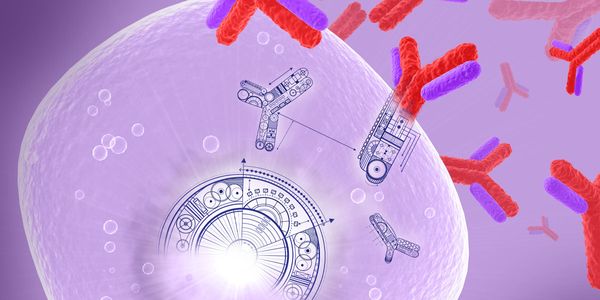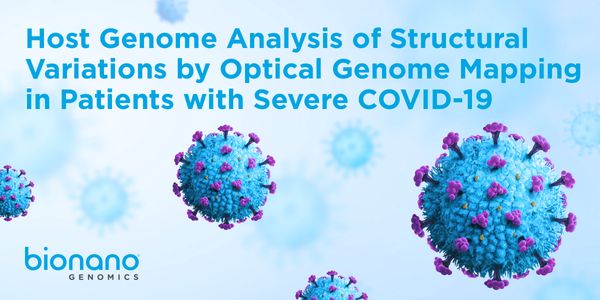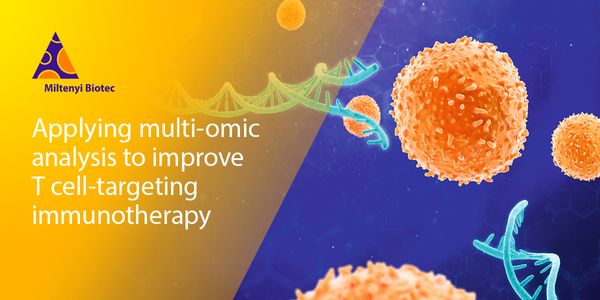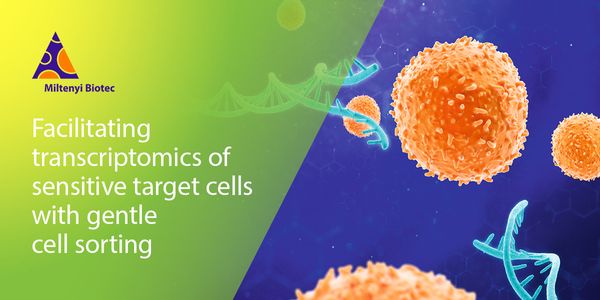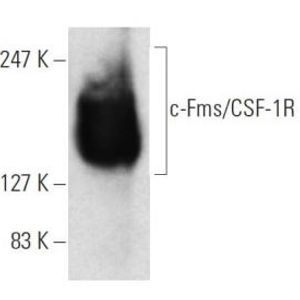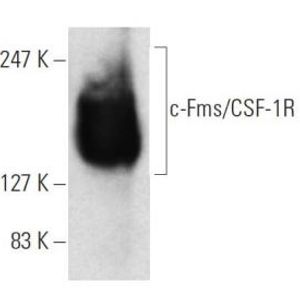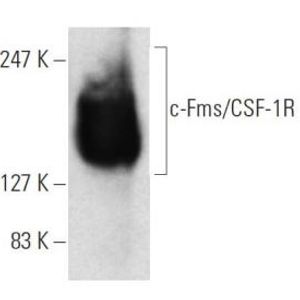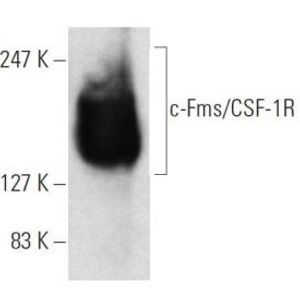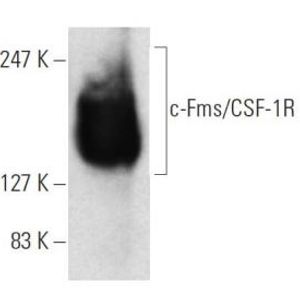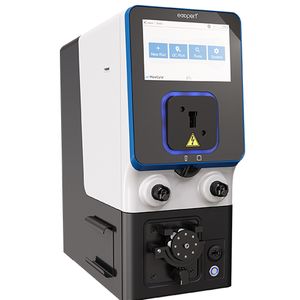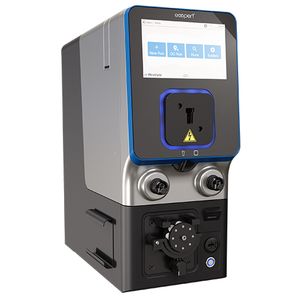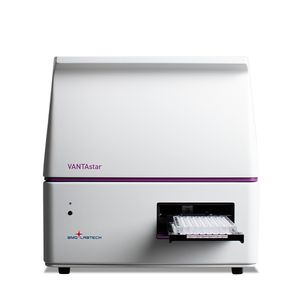Cancer Webinars
Stay informed on developments in cancer and oncology diagnosis, prevention and treatment through these curated webinars. As the race toward a cure for cancer continues, advances in cancer research are constantly revealed as innovation in the field of oncology progresses.
Show More
-
JUN 03, 2021 | 8:00 AMDate: June 3, 2021 Time: 8:00am (PDT), 11:00am (EDT), 5:00pm (CEST) Molecular combing provides unbiased quantification and characterization of DNA structure and dynamics by imaging single DN...
-
JUN 03, 2021 | 12:00 PMDATE: June 3, 2021 TIME: 12:00pm SGT This webinar is a virtual event that focuses on utilizing the Gibco CTS Rotea System for Cell and Gene Therapy...
-
JUN 02, 2021 | 7:00 AMDATE: June 02, 2021 TIME: 7:00am PDT In this talk we will present how we have optimized single-cell technologies to sort single viral particles by advanced flow cytometry and whole genome am...
-
MAY 27, 2021 | 8:00 AMDate: May 27, 2021 Time: 8:00am (PDT), 11:00am (EDT) With social distancing measures still enforced in large parts of the world, many researchers must minimize time in the lab where they may...
-
MAY 25, 2021 | 8:00 AMDate: May 25, 2021 Time: 8:00am (PDT) Reliable expression of recombinant proteins in human, CHO, or insect cells is essential for many aspects of biomedical research and drug development, bu...
-
MAY 18, 2021 | 8:00 AMDate: May 18, 2021 Time: 8:00am (PST) The global pandemic has caused an increased focus and scrutiny on molecular diagnostic assay development, resulting in a need for assays that provide qu...
-
Date: May 18, 2021 Time: 7:00am PDT, 10:00am EDT Proteins encoded by mutant genes in cancers can be processed and presented on tumor cell surface by human leukocyte antigen (HLA) molecules,...
MAY 13, 2021 | 9:00 AM
Date: May 13, 2021 Time: 9:00am PDT The value proposition for laboratory medicine has long been theorized, estimated and debated. Despite decades of effort and intangible proof, the strategi...
MAY 11, 2021 | 10:00 AM
Date: May 11, 2021 Time: 10:00zm PDT Your samples are some of the most valuable assets in the laboratory. After spending countless hours on extraction and preparation, your conclusions could...
MAY 11, 2021 | 8:00 AM
DATE: May 11, 2021 TIME: 8:00am PDT T cells are most important from basic research to therapeutic approaches and play a pivotal role in many diverse application fields such as basic immu...
MAY 06, 2021 | 7:00 AM
Date: May 6, 2021 Time: 7:00am PDT, 10:00am EDT, 4:00pm CEST Eukaryotic cell cultures respond to the most subtle influence. Apart from the risk of contamination, minimal changes in cultivati...
APR 28, 2021 | 8:00 AM
DATE: April 28, 2021 TIME: 08am PST Shakers and bioreactors are established versatile systems for cultivating microorganism, plant, and animal cells in suspension. Both methods aim at increa...
APR 28, 2021 | 7:00 AM
Date: April 28, 2021 Time: 7:00am (PDT), 10:00am (EDT) The varied clinical manifestations and outcomes in patients with SARS-CoV-2 infections implicate a role of host-genetics in the predisp...
APR 22, 2021 | 5:00 PM
Date: April 22, 2021 Time: 8:00am (PDT), 11:00am (EDT), 5:00pm (CEST) System transcriptomics of the schizophrenia brain - Phillip Khaitovich Schizophrenia tops the psychiatric disorder l...
APR 21, 2021 | 5:00 PM
Date: April 21, 2021 Time: 8:00am (PDT), 11:00am (EDT), 5:00pm (CEST) Spatial Answers Trilogy - Spatial Answers in Immunology Immunology Researchers share their Spatial Discoveries in SARS-C...
APR 20, 2021 | 7:00 AM
Date: April 20, 2021 Time: 7:00am (PDT), 10:00am (EST) There is a vital need to characterize Biopharmaceuticals in early phase screening to ensure the most suitable candidates are accelerate...
APR 15, 2021 | 7:00 AM
Date: April 15, 2021 Time: 7:00am (PDT), 10:00am (EDT) In widefield fluorescence microscopy both the contrast and resolution of a captured image is corrupted by light collected from adjacent...
APR 13, 2021 | 3:00 PM
Date: April 13, 2021 Time: 07:00am PST Trends continue towards the development of more sophisticated and physiologically relevant 3D in vitro models, such as stem cell-derived models, organo...
APR 08, 2021 | 5:00 PM
DATE: April 08, 2021 TIME: 08:00am PDT Multi-omics involves the use of different data modalities to study multiple “omes”, such as the genome, transcriptome, epigenome, and/or t...
APR 06, 2021 | 8:00 AM
Date: April 06, 2021 Time: 8:00am (PST), 11:00am (EST) The discovery of the reproducibility crisis has called into question a worrying number of scientific results over the last few years. In...
APR 01, 2021 | 8:00 AM
Date: April 01, 2021 Time: 8:00am (PST), 11:00am (EST) Generating therapeutic antibodies is far more challenging than obtaining antibodies that merely recognize their targets. Engineering po...
MAR 25, 2021 | 8:00 AM
Date: March 25, 2021 Time: 8:00am (PST), 11:00am (EST) Flow cytometry has expanded to have more users, more data, and multiple instrument types. While this has lead to more quantitative data...
MAR 24, 2021 | 7:00 AM
Date: March 24, 2021 Time: 7:00am (PST), 10:00am (EST), 3:00pm (CET) Multiplex immunofluorescence IHC is a powerful technique to address the increasing research needs in immuno-oncology t...
MAR 23, 2021 | 9:00 AM
Date: March 23, 2021 Time: 9:00am (PST), 12:00pm (EST) The chromatin regulators CBP and p300 maintain gene expression programs through lysine acetylation of chromatin and transcriptional reg...
MAR 18, 2021 | 8:00 AM
DATE: March 18, 2021 TIME: 8:00am PDT Sequencing of bulk cells, single cells, and nuclei is opening doors in the understanding of complex biological processes....
MAR 16, 2021 | 10:00 AM
Date: March 16, 2021 Time: 10:00am (PST) Scientific progress and breakthroughs today are often too expensive for most institutions to acquire. Each year, the National Institutes of Health (N...
FEB 11, 2021 | 10:00 AM
Date: February 11, 2021 Time: 10:00am (PST), 1:00pm (EST) Nanobodies are single-domain antibodies derived from heavy-chain-only antibodies (HcAbs) commonly found in camelids, consisting sole...




